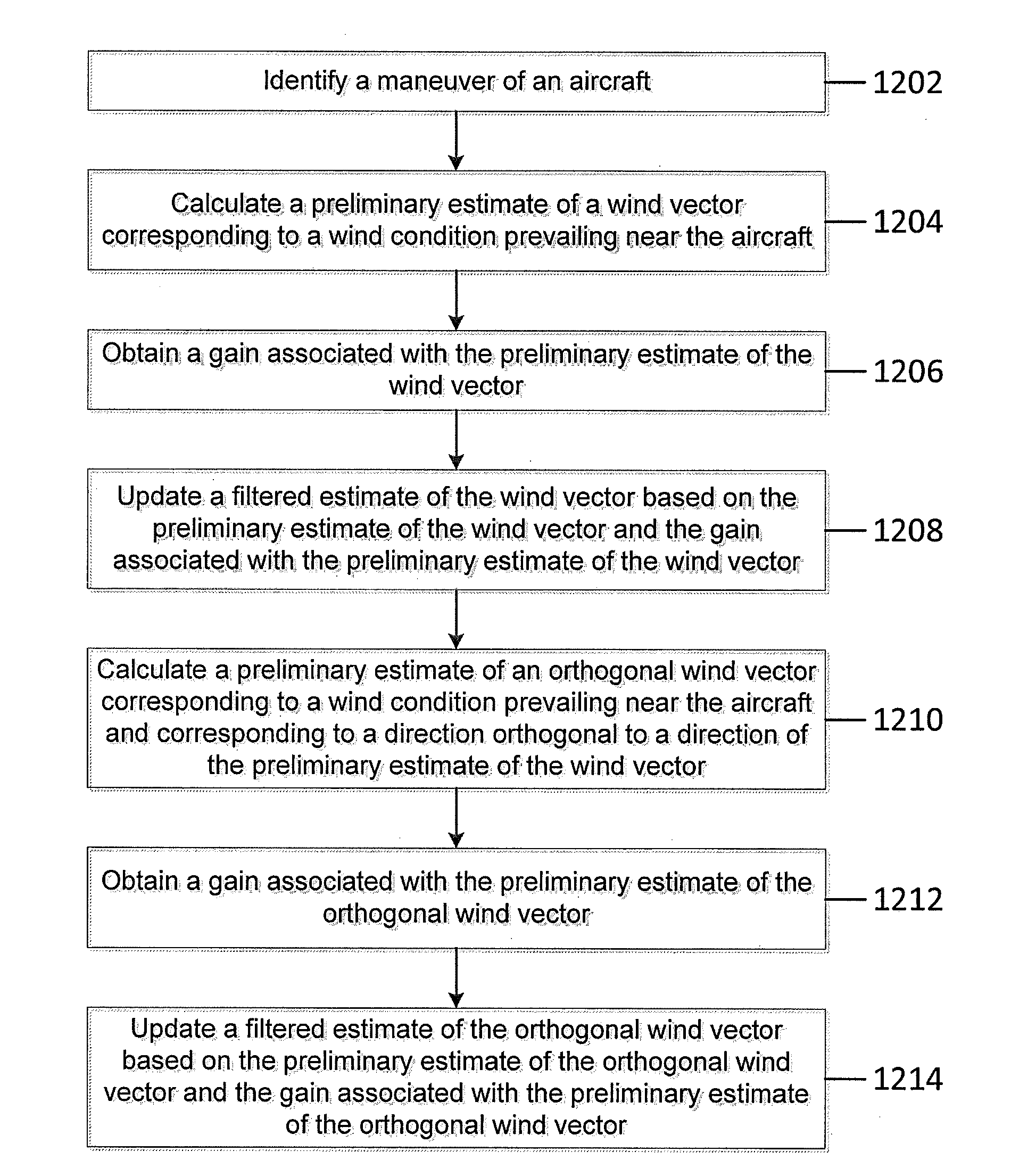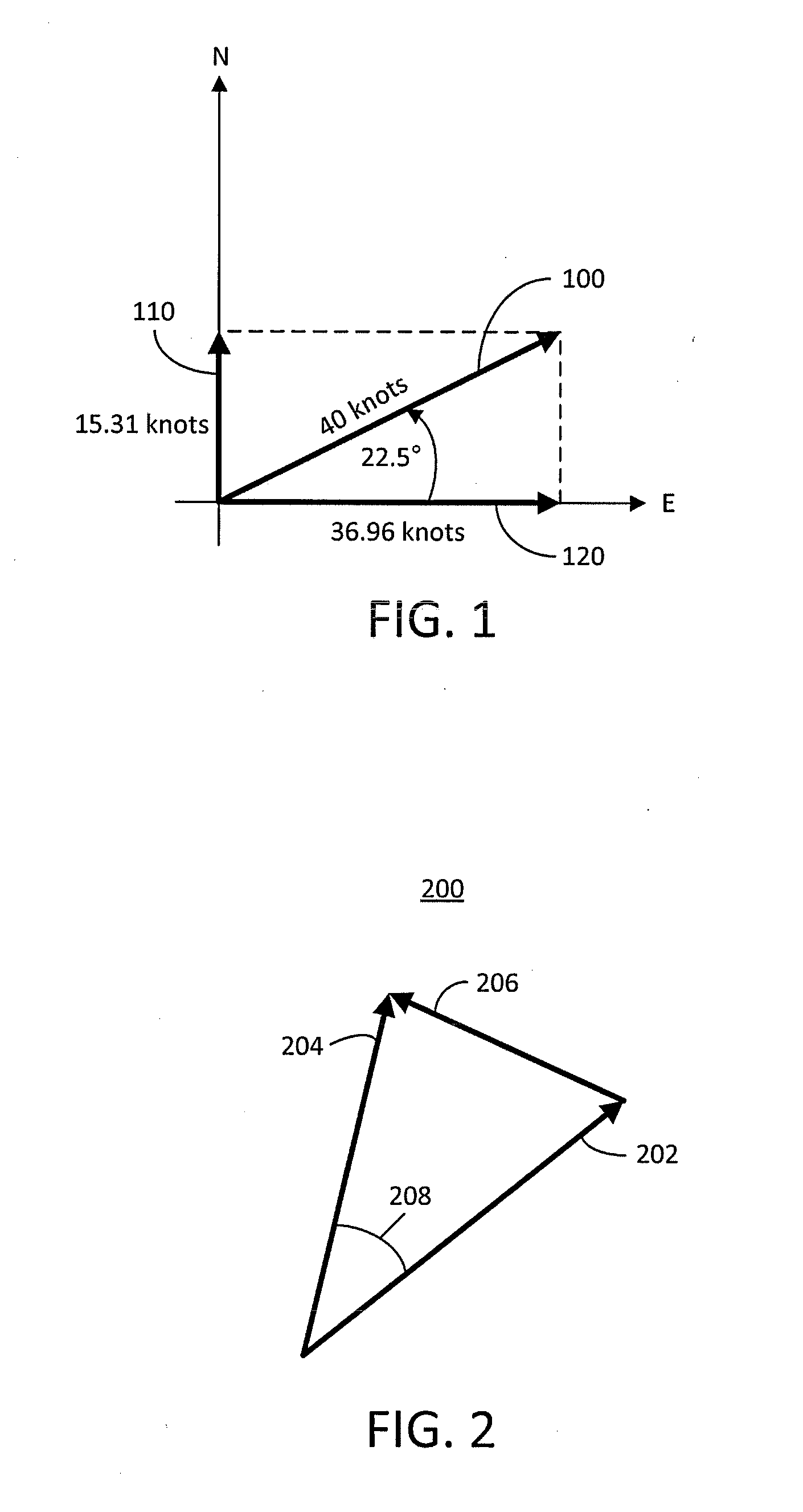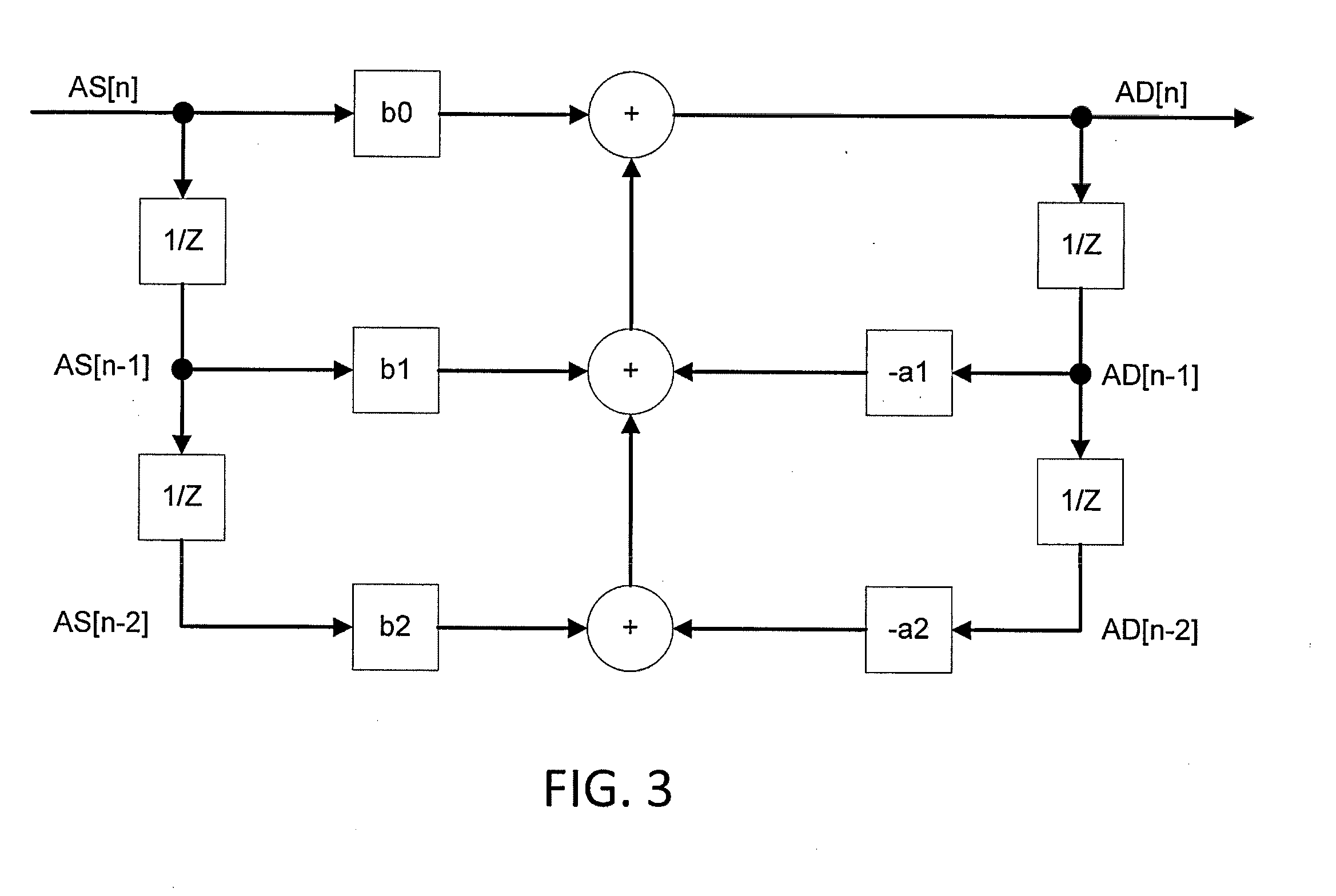Estimating a wind vector
a wind vector and speed estimation technology, applied in the direction of instruments, analogue processes, instruments for specific applications, etc., can solve the problems of affecting the performance of aircraft, affecting the progress of aircraft, and affecting the accuracy of wind speed estimation
- Summary
- Abstract
- Description
- Claims
- Application Information
AI Technical Summary
Benefits of technology
Problems solved by technology
Method used
Image
Examples
Embodiment Construction
[0045]Embodiments of the present disclosure may relate to estimating a wind vector. The inventors have recognized and appreciated that dead reckoning navigation may produce inaccurate estimates of wind vectors. The accuracy of the dead reckoning algorithm's output (i.e., the wind vector) is, in general, not resilient to inaccuracies in the algorithm's inputs (i.e., the air and ground vectors). Yet, conventional means for measuring an aircraft's airspeed (i.e., pitot tubes) may produce inaccurate airspeed measurements in a wide variety of circumstances. For example, the inventors have recognized and appreciated that pitot tubes may not accurately measure airspeed when an aircraft is in sideslip. When the aircraft is in sideslip, fixed pitot tubes, which are typically aligned with the aircraft's longitudinal axis, may not point directly into the relative wind produced by the aircraft's motion through the surrounding air mass. Thus, during sideslip, the pitot tubes may measure a vector...
PUM
 Login to View More
Login to View More Abstract
Description
Claims
Application Information
 Login to View More
Login to View More - R&D
- Intellectual Property
- Life Sciences
- Materials
- Tech Scout
- Unparalleled Data Quality
- Higher Quality Content
- 60% Fewer Hallucinations
Browse by: Latest US Patents, China's latest patents, Technical Efficacy Thesaurus, Application Domain, Technology Topic, Popular Technical Reports.
© 2025 PatSnap. All rights reserved.Legal|Privacy policy|Modern Slavery Act Transparency Statement|Sitemap|About US| Contact US: help@patsnap.com



